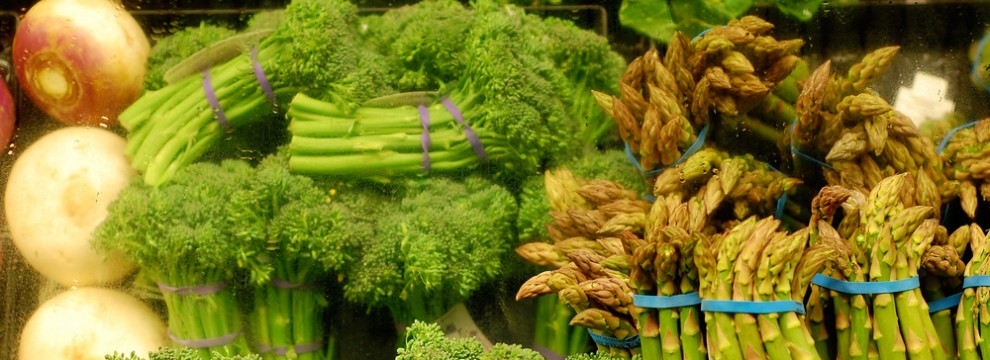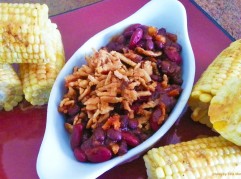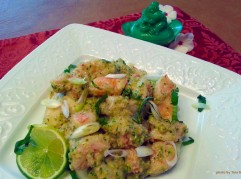And, now… Back to the Phyte!
![]() So many phytonutrients and only three meals and three snacks per day to fit them into. What?! You’re not eating six times a day?
So many phytonutrients and only three meals and three snacks per day to fit them into. What?! You’re not eating six times a day?
by Chef Tina Martini, The Medicine Chef
We’ll come back to that in another post. Phytonutrients are supercharged antioxidants. That much you know, right? What you may not know is these supercharged nutrients are part of a bigger family called micronutrients. They include the aforementioned phytonutrients, as well as vitamins and minerals. All three types of nutrients are equally important to our health. The key here is the “micro” before the “nutrient”. Micro is a prefix from the Greek μικρός (mikrós), meaning “small”. We need these naturally occurring nutrients in small amounts, on a regular basis. OK, we’ve conquered Nutrition 101. The next question is; how do we know we are getting enough of these valuable health protectors? There is one really easy way. Eat a wide variety of foods every day! We’re creatures of habit and stubborn old habits can make it harder to do than one might think. But, we’re all doing a much better job of eating seasonally, thanks to farmers markets and community based agricultural programs and this is improving the amount of quality nutrients we receive from fresh ingredients. PHYTO FACTS Spring is here! I know we’re all excited about that. Let’s look at some spring crops and their phytonutrients to inspire our spring recipe repertoire.
- ASPARAGUS– used in medicine for over two thousand years in many cultures, this family of pyhtonutrients are called Saponins. The #1 Saponin studied is Sarsasapogenin. This powerful phytonutrient is showing promise with ALS, A.K.A., Lou Gehrigs Disease. Asparagus is also a prebiotic. These set the digestive tract up for success and improve our absorption of ALL nutrients.
- TURNIPS– this root vegetable, and Asparagus too, contains Monoterpene. Monoterpene in lab research has stopped the growth of pancreatic, mammary, and liver tumors.
- MINT-contains Rosmirinic Acid, and is a great digestive aid, memory and metabolic stimulant. Adding this delicious leaf to salads as well as sipping mint tea, can provide relief of imflammation in general and more specifically offers relief from Irritable Bowel Syndrome. It also blocks free radicals (enviromental pollutants) from damaging our cells and aging us.
- WILD CAUGHT SALMON– I know we’re all familiar with the term Omega-3-Fatty-Acids. Here’s the big one… you ready? Dimethylaminorthin. Wow! Now we really have our mouths full! Think no wrinkles. DMAE, short for Dimethylaminorthin, keeps our skin moist and plump. Barbara Walters took the Dr. Nicholas Perricone challenge, and ate 8 oz’s of wild caught Salmon everyday for 30 days. When interviewed Ms. Walters said she “could not believe the change in her skin;” with an approximate 30% reduction in fine lines and softening the deeper lines substantially. So we can clearly see that the DMAE in the Salmon slows the aging clock and helps reverse damaged cell structure.
Now that’s is some powerful “Delicious Medicine.” Are you game? Click here for my Phyto Nutrient Chart. Well, I think we have bitten off enough to chew on for now… What foods do you use to heal your body or your soul? Let us know in the comment section. Here’s to your health! ![]()
 |
by Chef Tina Martini, “The Medicine Chef” @MedicineChef | Facebook Chef Martini is an experienced, well-versed television personality with a successful and proven track record. She holds a doctorate from Bastyr University in Naturopathy and a Nutrition degree from San Diego State University. She mixes cooking with nutrition, fitness and wellness! |











Leave a Reply
Want to join the discussion?Feel free to contribute!